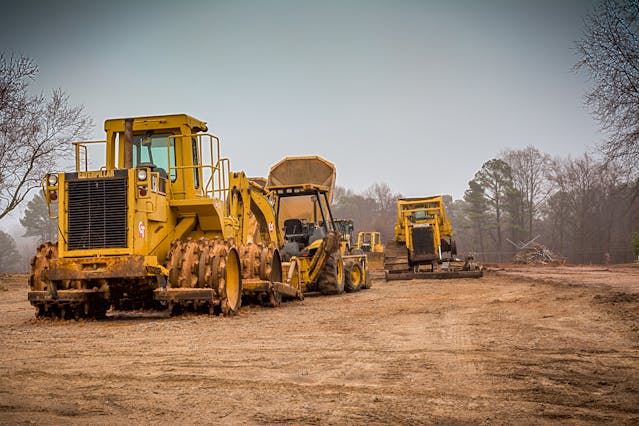Effective land management is the foundation of successful development, agriculture, conservation, and infrastructure projects. Before any of these initiatives can begin, the property must be properly prepared. That preparation starts with one essential process: land clearing.
Although it’s often viewed as a simple task of removing trees or brush, land clearing is much more complex and strategic than it appears. It requires planning, environmental consideration, safety protocols, and often regulatory compliance. When done responsibly, it transforms raw, unusable terrain into a functional and productive space. Whether the goal is to build, farm, restore, or protect, land clearing plays a vital role in shaping what comes next.
In this article, we’ll explore what land clearing involves, why it matters, the various techniques used, and how to carry out the process efficiently and sustainably.
The Purpose and Importance of Land Clearing
Land clearing is the process of removing vegetation, rocks, stumps, trees, and other obstacles from a piece of land to prepare it for a specific use. This process is crucial across a variety of sectors, including:
- Agriculture – to convert forested or overgrown land into productive farmland.
- Construction – to make way for buildings, roads, utilities, or other infrastructure.
- Environmental restoration – to remove invasive species or restore natural ecosystems.
- Fire prevention – to reduce fuel loads in wildfire-prone areas.
- Landscaping – to improve the aesthetic and functional aspects of a property.
In each case, the goals may differ, but the foundation remains the same: transform land into a usable, manageable space.
Poor or haphazard land clearing can lead to soil erosion, habitat destruction, legal issues, and long-term damage. Responsible clearing is not just about what’s removed—it’s about what remains and how the land is treated during and after the process.
Methods of Land Clearing
There are several techniques available for land clearing, each suited for specific conditions, project sizes, and environmental concerns. Choosing the right method depends on factors such as terrain, vegetation density, soil type, and the end use of the land.
1. Manual Clearing
This is the most labor-intensive approach and involves the use of hand tools such as chainsaws, axes, and machetes. It’s typically used for small projects or areas where machinery can’t reach.
Pros:
- High precision
- Minimal soil disruption
- Lower noise impact
Cons:
- Time-consuming
- Labor-intensive
- Not feasible for large-scale projects
2. Mechanical Clearing
In larger areas or commercial projects, heavy machinery is used to speed up the process. Bulldozers, excavators, and forestry mulchers can quickly remove large trees, shrubs, and stumps.
Pros:
- Fast and efficient
- Ideal for large or commercial properties
- Customizable depending on equipment used
Cons:
- Potential for soil compaction
- Higher fuel use
- Requires trained operators
3. Controlled Burning
This method involves intentionally setting fire to overgrown areas to clear vegetation. It is usually managed by professionals and used in rural or forest management scenarios.
Pros:
- Quick removal of underbrush
- Adds nutrients to the soil
- Can be part of ecosystem management
Cons:
- High risk if not managed properly
- Requires permits and oversight
- Temporary air quality issues
4. Chemical Clearing
Herbicides can be applied to kill vegetation, which is later removed or left to decompose. This technique is typically used in combination with other methods.
Pros:
- Targets specific plant types
- Less labor-intensive
Cons:
- Environmental concerns
- Potential water contamination
- May require repeated applications
Each method of land clearing carries its own balance of speed, cost, environmental impact, and effectiveness. Often, a combination of techniques is used to achieve optimal results.
Environmental Considerations
Modern land clearing practices emphasize sustainability and ecological responsibility. In the past, clearing often resulted in widespread deforestation, habitat destruction, and long-term land degradation. Today, regulations and best practices help mitigate those impacts.
Key environmental considerations include:
- Soil Health: Avoiding compaction and maintaining organic matter is critical for future land use, especially in agriculture.
- Erosion Control: Retaining buffer strips or planting cover crops post-clearing helps stabilize the soil.
- Wildlife Protection: Clearing schedules should avoid sensitive nesting or breeding seasons.
- Invasive Species Management: Clearing should remove invasive species while preserving or promoting native plants.
A responsible approach evaluates both immediate project goals and long-term land viability. In many cases, environmental consultants or biologists are involved to guide the process.
Steps to Successful Land Clearing
Proper planning and execution are crucial to any clearing project. Here’s a typical step-by-step breakdown:
Step 1: Assessment and Planning
Before starting, survey the land to understand its topography, vegetation types, drainage patterns, and existing structures. Identify any protected trees or environmentally sensitive areas. Establish clear project goals.
Step 2: Permitting and Compliance
Depending on the size and scope of the project, permits may be required. Regulations vary based on location and land use designation. Failing to comply can result in fines or project delays.
Step 3: Choosing the Right Equipment and Method
Select the appropriate clearing technique based on your assessment. Consider hiring professionals with the tools and expertise necessary for your specific needs.
Step 4: Clearing Execution
Begin the actual clearing, starting with large obstructions like trees and stumps, and working toward smaller vegetation. Proper safety measures, erosion control, and environmental precautions should be followed throughout.
Step 5: Debris Management
Once cleared, the resulting debris must be dealt with. Options include mulching, composting, burning (where permitted), or hauling to a disposal site.
Step 6: Land Restoration or Preparation
After clearing, the land may need to be graded, seeded, or otherwise prepared for its intended use. This is a critical stage that affects long-term outcomes.
Safety and Risk Management
Land clearing involves significant hazards, particularly when machinery, unstable trees, or fire are involved. Safety protocols must be strictly followed to prevent accidents and minimize liability.
Best practices include:
- Training equipment operators
- Wearing protective gear
- Using signage and barriers in active zones
- Monitoring weather conditions
- Having emergency response plans in place
In some regions, insurance requirements or occupational safety standards will dictate additional safety measures for commercial projects.
Economic and Functional Benefits
The financial benefits of land clearing extend beyond the immediate usability of the land. Well-executed clearing increases land value, improves functionality, and reduces long-term maintenance costs.
For agriculture, cleared land allows for efficient planting, irrigation, and harvesting. It also facilitates pest control and enhances crop yield potential.
For construction, the process ensures a stable foundation, enables access for heavy machinery, and reduces surprises during excavation or development phases.
For forestry or conservation, clearing invasive species or thinning overgrowth supports biodiversity and improves forest health.
Even for recreational or aesthetic purposes, clearing can transform wild, overgrown properties into usable spaces such as trails, gardens, or event venues.
Sustainable Alternatives and Innovations
The future of land clearing is leaning heavily toward sustainable and low-impact methods. Innovations in this space include:
- Selective clearing: Removing only unwanted species while preserving valuable vegetation.
- Hydroseeding: Re-vegetating cleared areas with protective ground cover.
- Remote-controlled equipment: Increasing precision and reducing human risk in dangerous terrains.
- Eco-mulching: Turning cleared materials into nutrient-rich mulch for reuse on-site.
Technology is playing a growing role in mapping, monitoring, and managing land clearing activities, leading to more informed decision-making and lower environmental impact.
Final Thoughts
Land clearing is a foundational step in countless land-use projects. Far from being a brute-force activity, it is a precise and strategic process that requires thoughtful planning, technical skill, and a commitment to sustainability.
Whether your goal is to build, farm, restore, or manage, the way you clear your land determines how successful the next steps will be. With the right approach, tools, and team, land clearing can unlock a property’s full potential while preserving the natural balance of the environment.
If you’re considering a project that requires land clearing, consult with experienced professionals to ensure that every stage—from permitting to execution—is done correctly, safely, and responsibly.





























